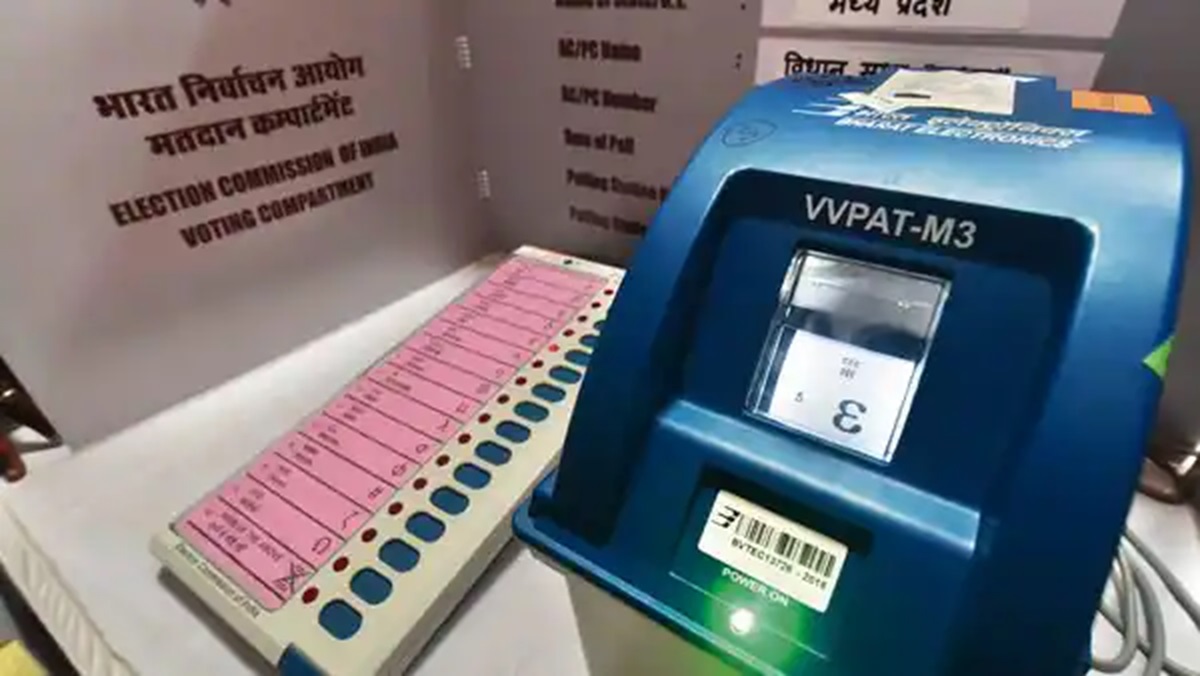On April 26, the Supreme Court delivered its much-awaited judgement on the pleas seeking 100% cross verification of Electronic Voting Machines (EVMs) data with Voter Verifiable Paper Audit Trail (VVPAT) records. Through the said judgement, delivered as India enters its second phase of voting for General Elections 2024, the bench of Justices Sanjiv Khanna and Dipankar Datta refused the main plea for complete verification of VVPAT slips with EVM tally and prayer to return to paper ballot. However, the bench issued certain directions for the strengthening of the EVM system. From ensuring that the voting data remains stored and sealed to empowering the electoral candidates to put in requests for verification, these directions issued by the Supreme Court will potentially result in making EVMS fool proof.
While delivering the judgment, Justice Datta stated “While balanced perspective is important but blindly doubting a system can breed scepticism and thus meaningful criticism is needed. Be it judiciary, legislature, etc., democracy is all about maintaining harmony and trust among all the pillars. By nurturing a culture of trust and collaboration we can strengthen the voice of our democracy,” Bar and Bench provided.
Justice Datta further said that “Instead of unwarranted distrust, a critical yet constructive approach guided by evidence and reason should be followed…to ensure the system’s credibility and effectiveness”.
The pleas in the matter had been filed by NGO-Association for Democratic Reforms, Abhay Bhakchand Chhajed and Arun Kumar Aggarwal. The petitioners had prayed that instead of the prevalent procedure, where the Election Commission cross-verifies EVM votes with VVPATs in only 5 randomly selected polling stations in each assembly constituency, all VVPATs be verified. They further sought measures to ensure that a vote is ‘recorded as cast’ and ‘counted as recorded’.
It is essential to note that the Supreme Court bench had reserved its judgment on April 18. The matter was listed again on April 24 as the Bench wanted some technical clarifications from the Election Commission. The clarifications sought by the officer of the Election Commission were regarding the installation of the micro-controller and whether the same is one-time programmable or not. In addition to this, the bench had asked about the sealing of both the control unit and the VVPAT of EVMs, the number of Symbol Loading Units available and the limitation period for filing election petition. Taking into consideration the answers provided by the officer, the judgment was pronounced today.
Notably, as reported by LiveLaw, a total of two separate yet concurring judgments have been authored by the Bench in the said matter. During the delivery of the judgment, Justice Khanna said “We have elaborately discussed the protocols, technical aspects.”
Directions issued by the Supreme Court:
The following directions were issued by the bench to the Election Commission of India (ECI) and other authorities:
- Sealing and securing symbol loading unit: That on completion of the symbol loading process in the EVM undertaken on or after May 1, 2024, the symbol loading unit should be sealed and secured in containers. The bench directed the candidates and their representatives to sign the seal. It was further directed that the sealed containers containing the SLUs shall be kept in the store rooms along with the EVMs at least for 45 days post the declaration of results. The same will then be opened and sealed like EVMs.
- Checking and verification of burnt memory: The bench allowed for the verification of the burnt memory semi-controller of 5% of EVMs per assembly segment of a parliamentary constituency in case a written request for the same is made by either of two runner-up candidates, after declaration of results. As provided by Justice Khanna, the burnt memory semi controller in 5% of the EVMs, i.e. the Control Unit, Ballot Unit and the VVPAT, per assembly constituency per parliamentary constituency shall be checked and verified by a team of engineers from the manufacturers of the EVM post the announcement of results upon a written request by the runner-up candidates.
Notably, such a request by the candidates has to be made within 7 days of the declaration of the results. The bench further directed that the actual cost of the verification process has to be borne by the candidate making the said request. However, in case any discrepancy or tampering is found to have taken place with the EVM, the aforementioned expenses will be refunded.
The bench additionally directed that while making the request for verification, the candidates or their representatives shall identify the EVMs sought to be checked by the polling station or the serial number. The request is to be made within 7 days from the date of declaration of the results and all candidates (and their representatives) shall have the option to remain present at the time of verification. Notably, the bench directed that the district election officer shall certify the authenticity of the burnt memory;
It is crucial to note that Justice Khanna further asked the ECI to examine the feasibility for introducing an electronic machine for vote counting the paper slips. Furthermore, the Bench asked the ECI to consider whether, along with the symbols, there can be a bar code for each party.
Related:
Is the Indian EVM & VVPAT System free, fair, fit for elections or can it be manipulated?

